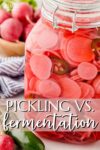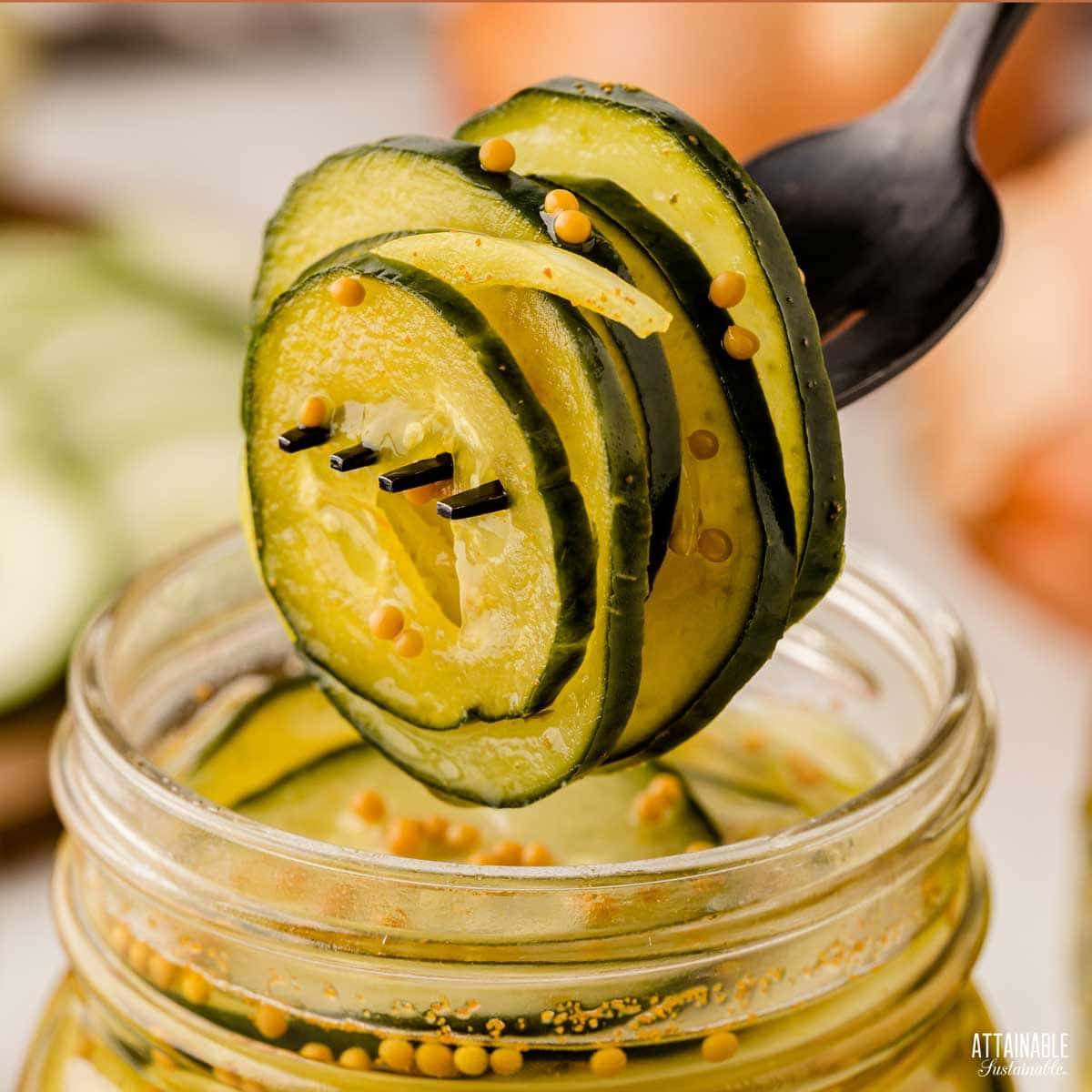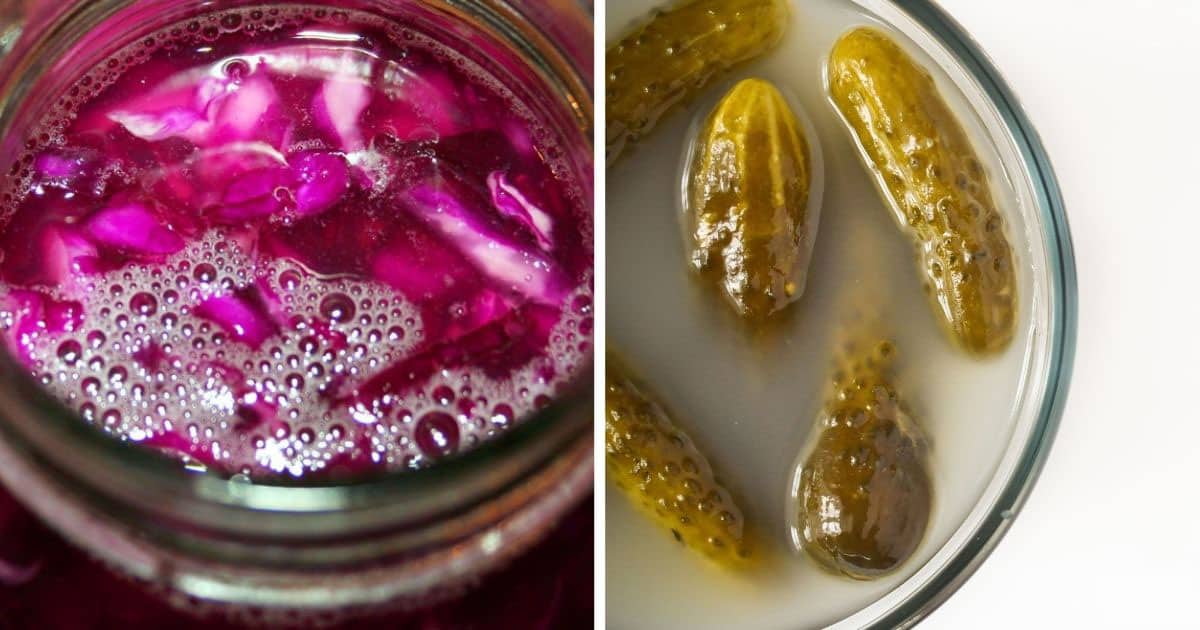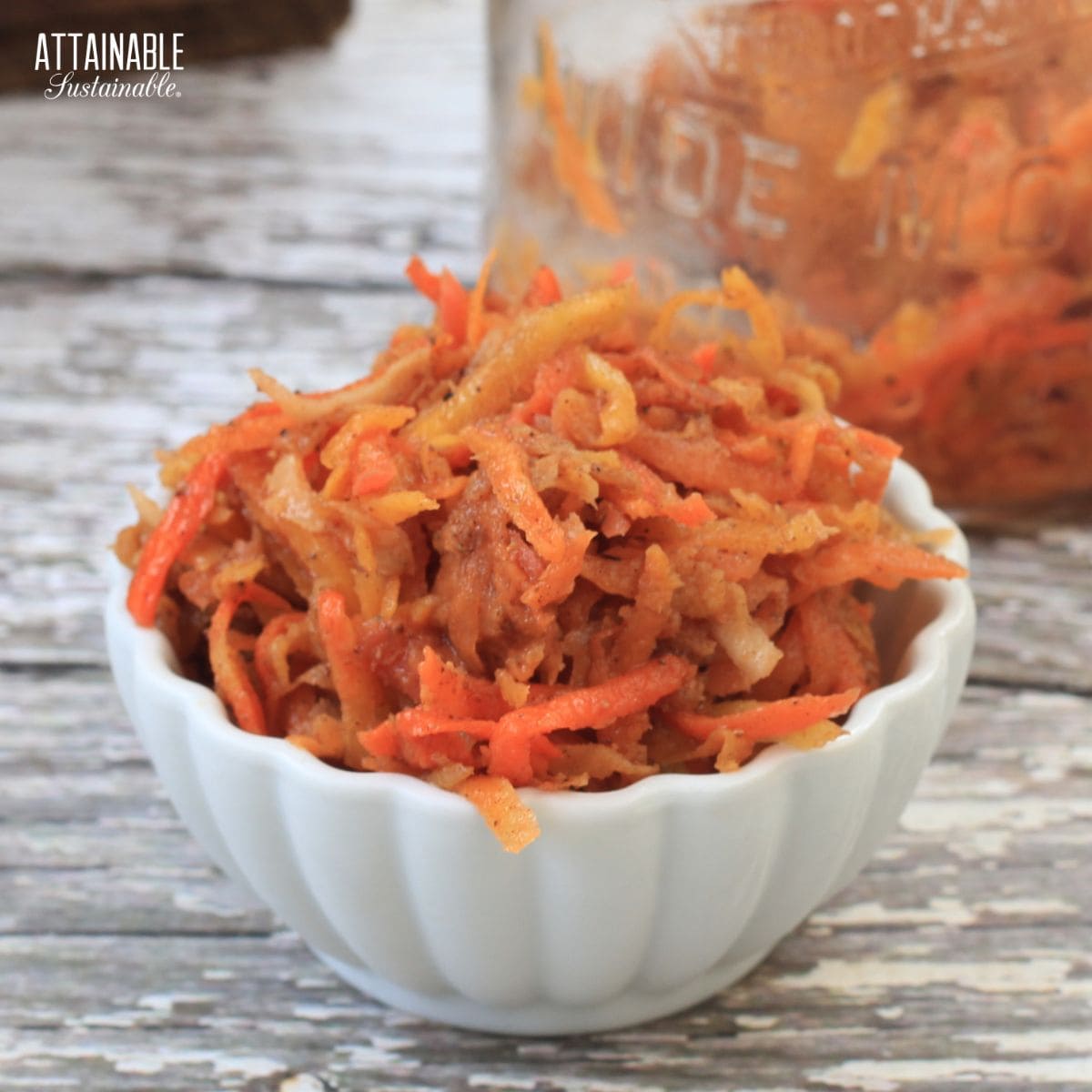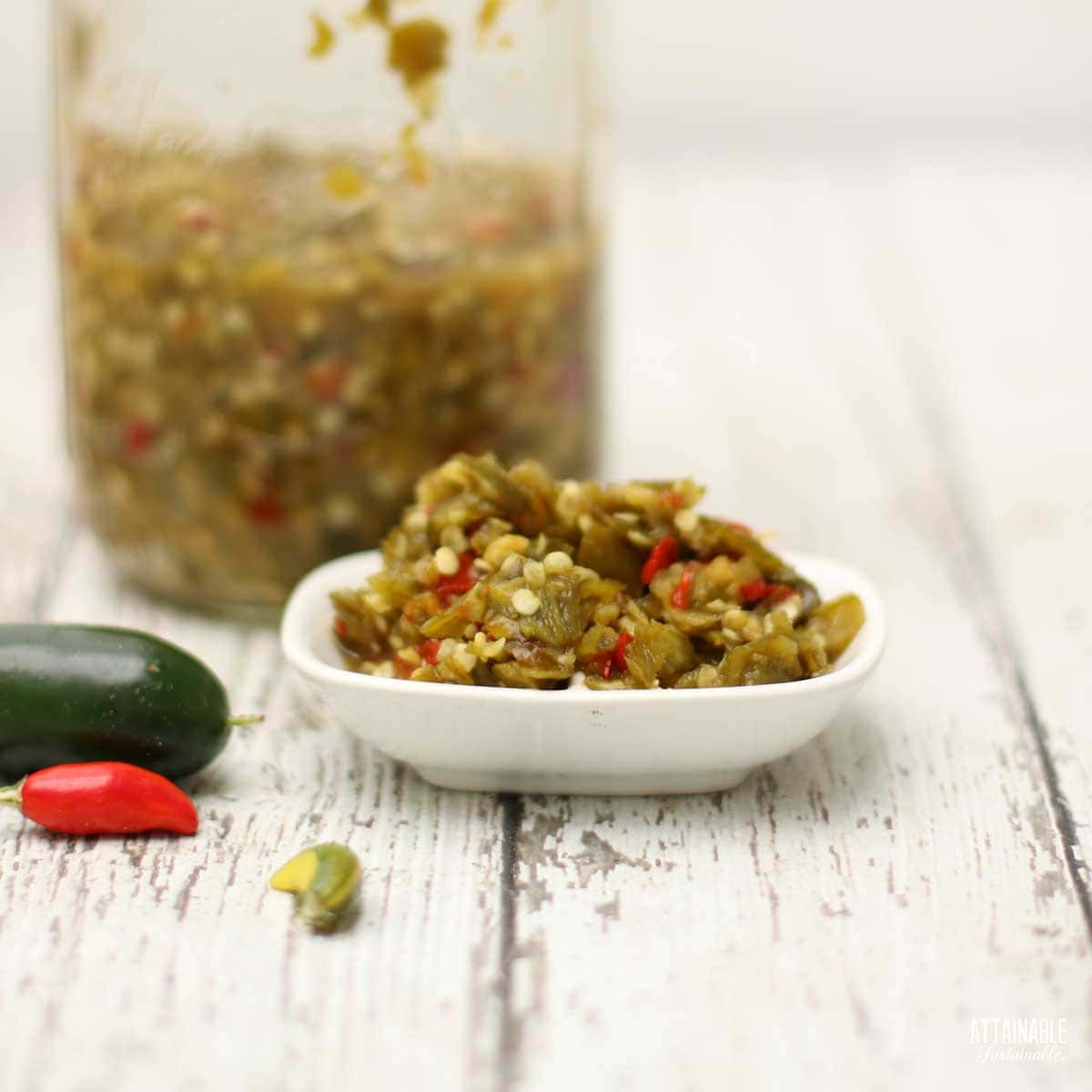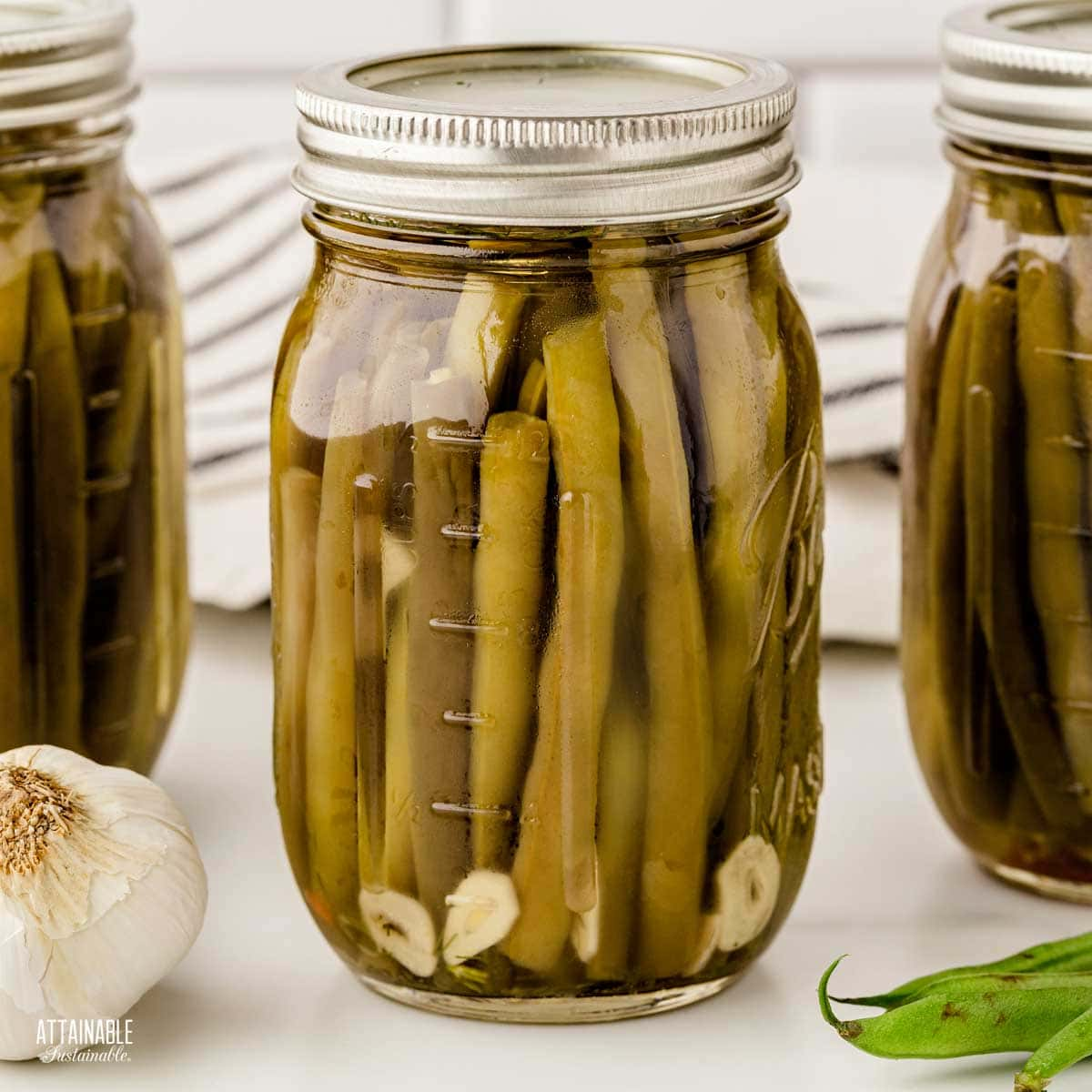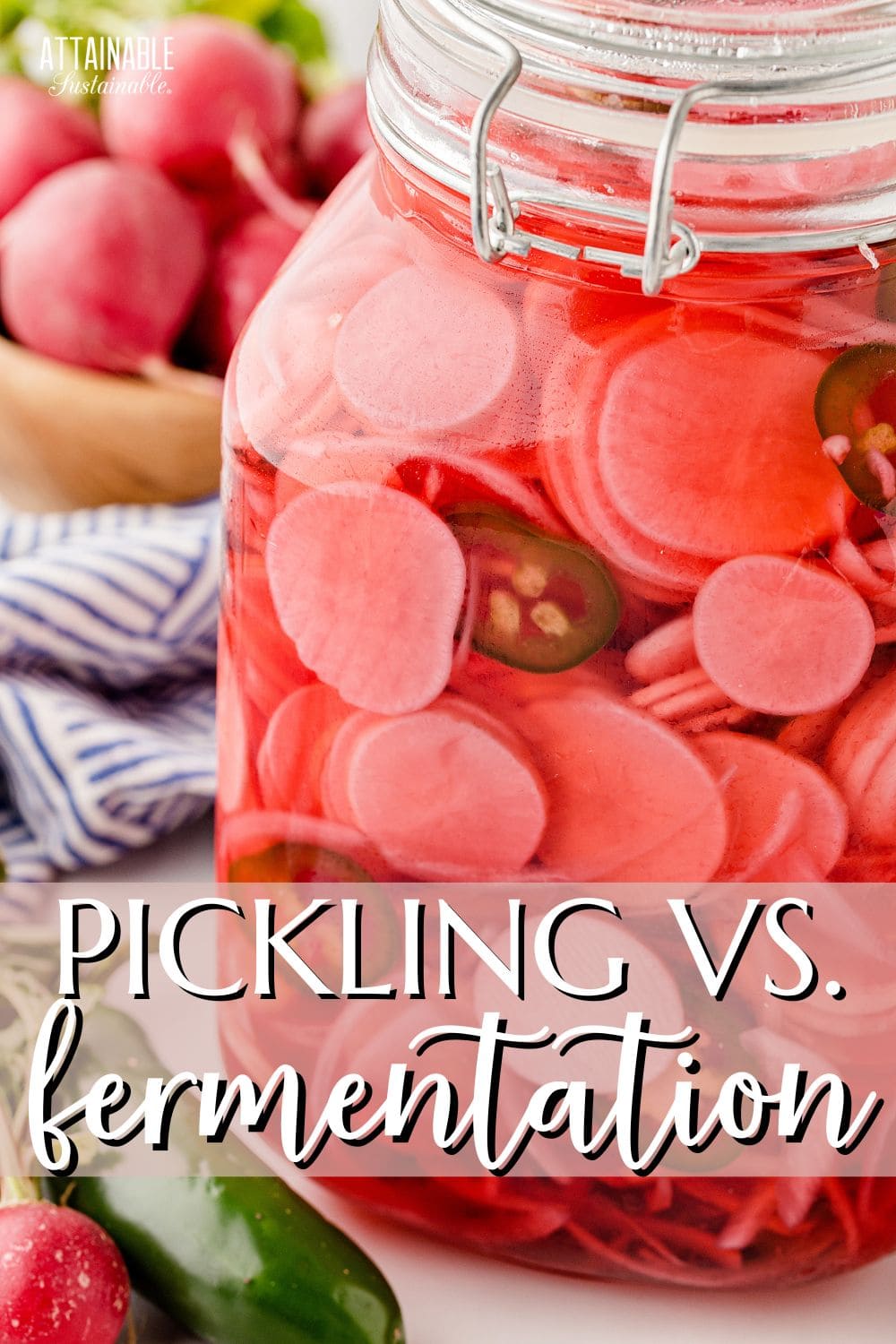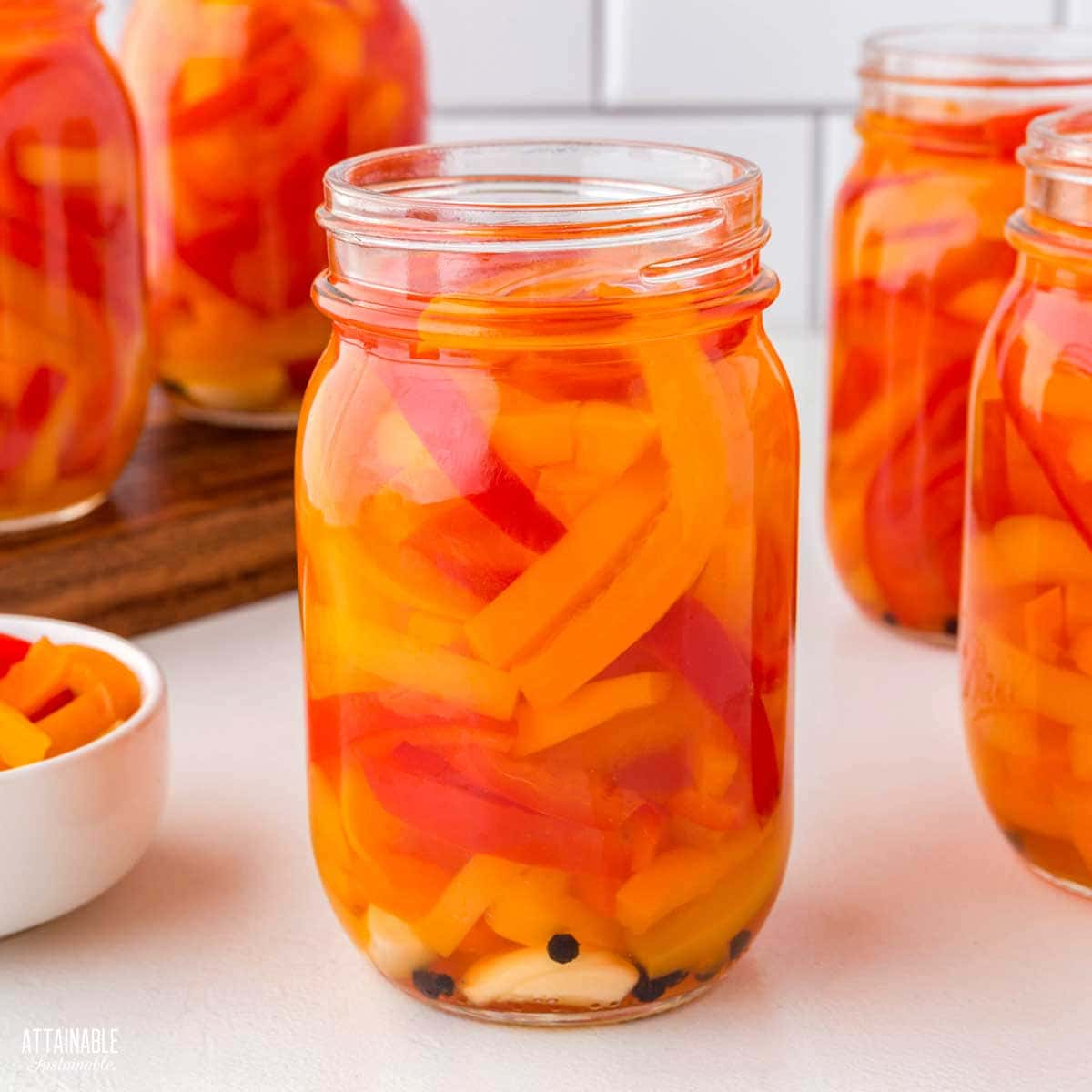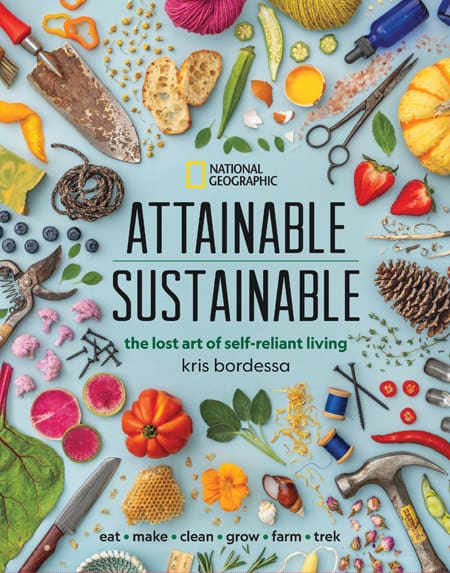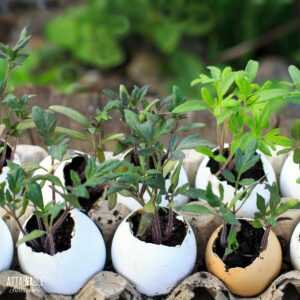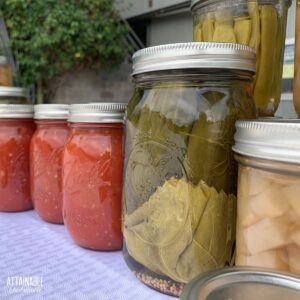Ready to extend the shelf life of a variety of fresh produce? There are two ways to create crunchy pickles that will last in your fridge for months and months. Let’s talk about the difference between pickling and fermenting.
Pickling and fermenting are just two ways to preserve foods. Here are even more ways to preserve foods!
When my book was published, I did a number of radio interviews and one of the most asked questions was “what’s the difference between pickling and fermenting?”
And it’s true, it can be confusing because we often use the term “pickles” interchangeably, whether we used a pickling process or a fermenting process to make them.
The Handcrafted Pantry

Ready to DIY your pantry with more wholesome ingredients? Check out my ebook, The Handcrafted Pantry! Filled with delicious recipes for some of your favorite condiments, snacks, and toppings, it’s the guide you need to start skipping packaged products and embrace homemade.
Pickling vs. Fermenting
Both are a method of food preservation that can be tackled in your home kitchen, often without any special equipment.
No matter which method you choose, the result is pickled vegetables that have a somewhat sour flavor. Some are salty, some are a little sweet and sour, but the final product is a crispy, crunchy snack that’s worthy of the prettiest charcuterie board.
5 Easy Steps to Transform Your Pantry!
Ready to switch from store bought to homemade? Let me help you make some changes! Grab my FREE five-part guide to getting started.
Traditionally Fermented Foods
Cultures from around the world have used the fermentation process as a method to preserve food for centuries. Not only do fermented pickles taste good, but they have some nice health benefits, thanks to the probiotics that develop during the fermenting process.
At its most basic, fermenting foods calls for combining them with salt or immersing them in a saltwater brine and leaving them at room temperature for days or weeks. When foods are properly stored in an anaerobic environment — that is, one without air — bacteria forms and they become fermented.
There are a few types of fermentation, but vegetable ferments are primarily made with lacto-fermentation, in which we help lactic acid bacteria (LAB) thrive.
Salt is key in LAB fermentation. It can be added to ferments in the form of a salt brine or massaged directly into vegetables as it is for making sauerkraut.
In either case, the salt is critical in inhibiting the growth of unwelcome microbes, while giving salt-tolerant lactic acid bacteria a chance to develop. Pickles fermented with this method are loaded with lactic acid bacteria and simply don’t allow for the intrusion of any “bad” microbes.
During the process, beneficial bacteria produce enzymes and organic acids that ferment the foods, giving them their unique tangy flavor.
These fermented vegetables will last for months in the refrigerator. Do they have to be refrigerated? That’s the million dollar question. Depending on the temperature, fermentation will continue; refrigerating the jars drastically slows the process. Pre-refrigeration, fermented foods were stored in cool places, such as a basement or root cellar.
Ready to try your hand at fermenting? Here are some probiotic-rich crunchy fermented pickles (and some fruit!) to try:
- Fermented carrots
- Green cabbage kimchi
- Fermented oranges
- Beet green sauerkraut
- Fermented hot pepper relish
- Fermented deli-style cukes
- Fermented cauliflower
- Fermented radishes
- Banana pepper hot sauce
- Fermented pumpkin spears
- Sauerkraut
- Fermented snap peas
- Beet kraut
Pickling Vegetables
Making pickled foods calls for submerging raw (or sometimes lightly cooked) vegetables in an acidic brine. The most common brine is a base of vinegar diluted with water, but lemon juice is called for in some recipes.
Pickled cucumbers are probably the most recognized pickle product, since they’re so readily available on grocery store shelves, but there are plenty of veggies that make great pickles.
To confuse things further, there are two ways to make pickles:
Refrigerator pickles call for making a brine and storing the jars in the refrigerator. The shelf life is quite long, but these do take up space in the refrigerator. To pickle vegetables and have a shelf stable product, you will need to can them in a water bath following safe canning guidelines.
Refrigerator Pickles
I love refrigerator pickles for their ease. They’re easy to make up in small batches, using what’s coming out of the garden at any given time. I’d never pull out the canner to make one or two pints of pickles; instead, I make up a quick brine and pour it over whatever vegetable I wish to preserve and then tuck them in the fridge.
Refrigerator pickles last for months and months in the fridge and they always remain crisp. The downside is that they do take up space in the refrigerator.
Since these pickles are not processed, you can use any sort of jar you like. Upcycle jars from store-bought items or use what you have in your kitchen.
Try these refrigerator pickled vegetables and you’ll be hooked!
- Refrigerator dill pickles
- Dilly beans
- Refrigerator pickled onions
- Quick pickled radishes
- Bread and butter pickles
- Crunchy pickled jalapeños
- Banana pepper rings (canning instructions, too!)
Canning Pickles
The process of making pickles stable is fairly straightforward. Because they are made in an acidic brine, it’s safe to can them using a water bath method. You’ll make the pickles much as you would refrigerator pickles, but process them to make shelf-stable jars. (Note: Be sure to use canning recipes from a trusted source.)
One challenge of canning pickles — particularly cucumber pickles — is that processing them can often cause pickles to become soft or mushy. You can combat this by adding a grape leaf to each jar! The tannins in the leaf can help retain the crispness.
Pickles that are canned in a water bath must be made in canning jars, aka mason jars. Go here to learn about canning equipment and the jar system, as well as why it’s important to use these jars.
